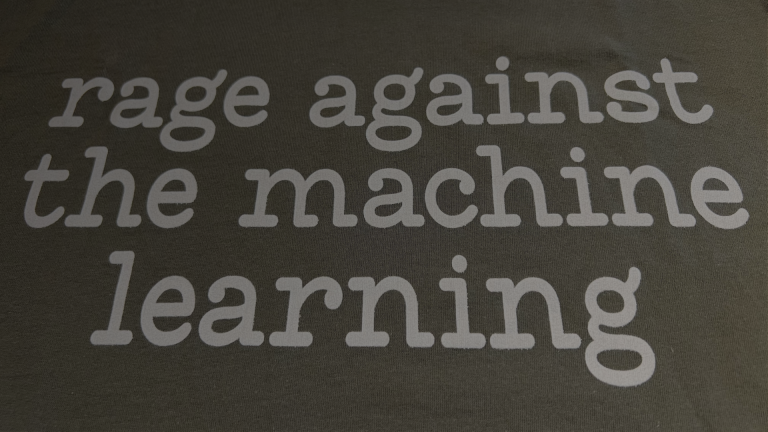Automated Document Review & Compliance Checks: A Strategic Implementation Guide
Organizations generate and process enormous volumes of documents: contracts, agreements, policies, proposals, reports, submissions, applications. Many of these documents must meet specific requirements: legal compliance, regulatory standards, internal policies, industry best practices, or contractual obligations. Ensuring documents meet these requirements typically requires manual review by subject matter experts, legal counsel, compliance professionals, or quality assurance teams.
This manual review process creates persistent challenges. It’s time-consuming, reviewing a complex contract might take hours as reviewers check each clause against applicable requirements. It’s expensive, senior professionals bill significant rates for review time, and internal staff time carries substantial opportunity cost. It’s inconsistent, different reviewers interpret requirements differently, apply varying levels of rigor, or catch different issues. It’s a bottleneck, documents sit in review queues while business operations wait, delaying deals, slowing processes, and frustrating stakeholders.
The business cost extends beyond direct review time. Slow document review delays business transactions: sales agreements awaiting legal review, vendor contracts pending procurement approval, regulatory submissions waiting for compliance checks. Inconsistent review creates risk: some non-compliant documents pass review while compliant documents get unnecessarily flagged. Review bottlenecks force difficult choices between speed (approving documents with insufficient review) and thoroughness (creating unacceptable delays). Organizations either accept compliance risk or operational friction, but struggle to achieve both speed and rigor simultaneously.
Traditional approaches to scaling document review (hiring more reviewers, creating detailed checklists, or implementing basic document templates) help but don’t fundamentally solve the problem. They increase cost linearly with volume, still rely on manual effort prone to fatigue and inconsistency, and don’t eliminate the bottleneck for complex or non-standard documents.
LLM-powered document review and compliance checking systems can address these challenges by automatically analyzing documents against requirements, identifying compliance issues and risks, ensuring consistency with policies and standards, flagging deviations or concerns for human review, and enabling review teams to focus on genuine judgment calls rather than routine checking. But this use case requires careful implementation to ensure automation enhances rather than undermines review quality, maintains appropriate human oversight for high-stakes determinations, and builds trust among legal, compliance, and business stakeholders.
Is This Use Case Right for Your Organization?
Identifying the Right Business Problems
This use case makes strategic sense when your organization faces specific, measurable document review challenges:
Document review creates operational bottlenecks. If contracts, agreements, or submissions sit in review queues for days or weeks, waiting for legal, compliance, or quality teams to complete reviews, you have a throughput constraint. Calculate the cost: How many deals or business processes are delayed by document review? What’s the revenue impact of delayed sales agreements? What’s the competitive disadvantage when your contract review takes weeks while competitors respond in days?
Review costs are substantial and growing. If you’re spending significant budget on external counsel for document review, or if internal review teams are stretched beyond capacity, the financial burden is measurable. Calculate current review costs: external legal fees, internal staff time at loaded rates, opportunity cost of delayed strategic work. If volume is growing faster than budget, you face an unsustainable trajectory.
Review quality is inconsistent. When similar documents receive different treatment (some reviewers flag issues others miss, or interpretations vary across reviewers) you have quality risk. Inconsistent review creates both compliance gaps (issues missed) and operational friction (legitimate documents unnecessarily delayed). If you can identify examples where review outcomes varied inappropriately, consistency improvement delivers value.
Routine review consumes expert capacity. If senior legal counsel, compliance professionals, or subject matter experts spend significant time on routine document checking (verifying standard clauses, confirming regulatory requirements are met, checking against templates) their expertise is underutilized. These professionals should focus on complex negotiations, novel legal questions, strategic risk assessment, or policy development, not routine verification.
Compliance violations occur despite review processes. If non-compliant documents pass through review (discovered later through audits, regulatory examinations, or when issues arise) your review process has gaps. Each compliance failure that should have been caught in review represents both review process failure and potential liability.
Document volume makes comprehensive review infeasible. Perhaps you receive hundreds or thousands of documents requiring review: vendor agreements, employee submissions, partner applications, regulatory filings. If comprehensive review of all documents is impossible given staffing, you’re forced to sample, prioritize, or implement abbreviated reviews that create coverage gaps and risk.
When This Use Case Doesn’t Fit
Be realistic about when this approach won’t deliver value:
- Document volume is genuinely low. If you review 5-10 documents monthly, manual review by appropriate experts is sustainable and probably superior. Don’t automate what doesn’t need automation.
- Documents require deep negotiation and strategic judgment. Some document review is fundamentally about negotiation strategy, relationship dynamics, or business judgment that AI cannot replicate. If most of your documents involve substantial custom negotiation, automation may not help significantly.
- Requirements are unclear or constantly evolving. AI can check against defined requirements but struggles when requirements are ambiguous, subjective, or change frequently. Establish clear, stable requirements before automating review.
- Risk tolerance is extremely low for your document types. Some documents (major M&A agreements, critical regulatory submissions, high-stakes litigation documents) carry such consequences that only human expert review is appropriate. Don’t automate review of documents where errors are unacceptable.
- Your organization lacks review expertise to validate automation. Automated review must be validated by humans with sufficient expertise to assess whether AI findings are correct. If you lack this expertise internally, automation is premature.
Measuring the Opportunity
Quantify the business case before proceeding:
- Review time and cost savings: How much time do review teams spend on routine document checking versus judgment calls? If AI handled routine verification, what capacity would be freed? Calculate time savings at loaded rates for internal staff or billing rates for external counsel.
- Throughput improvement: How much faster could documents move through review with automated initial checking? If contract review time decreased from 5 days to 1 day, what would faster deal closure be worth? Calculate revenue acceleration or competitive advantage.
- Quality and consistency improvement: What do compliance violations or inconsistent review cost: regulatory fines, litigation risk, operational friction, damaged relationships? If automation improved consistency and catch rate, calculate risk reduction value.
- Scalability without proportional cost: If document volume grows 50%, does review cost grow 50%? With automation, cost growth should be sublinear – handle more volume without proportionally scaling headcount. Calculate the economic leverage automation creates.
- Expert capacity for strategic work: If senior professionals spent 40% less time on routine review, what strategic initiatives could proceed? Calculate the value of policy development, risk assessment, strategic advice, or relationship building currently deferred due to review burden.
A compelling business case shows ROI within 12-18 months and demonstrates clear connection to business velocity, compliance risk reduction, and strategic capacity rather than just operational efficiency.
Designing an Effective Pilot
Scope Selection
Choose a pilot scope that proves value while managing risk:
Select a specific document type with clear requirements. Don’t try to automate review for all document types simultaneously. Pick one category:
- Standard vendor or customer contracts (NDAs, service agreements, purchase terms)
- Employee-related documents (offer letters, policy acknowledgments, compliance certifications)
- Regulatory submissions or reports with defined requirements
- Internal policies or procedures requiring compliance with standards
- Proposals or RFP responses requiring completeness checks
Choose document types with moderate complexity and volume. Ideal pilot candidates:
- Have clear, documentable review requirements
- Occur frequently enough to demonstrate value (20+ per month)
- Currently create review bottlenecks or consume substantial time
- Carry moderate rather than catastrophic risk if review is imperfect
- Have expert reviewers available to validate automation
Define precise review requirements and criteria. Document exactly what constitutes passing review:
- Required clauses or sections that must be present
- Prohibited terms or provisions that must be absent
- Compliance with specific regulations or standards
- Consistency with templates or standard language
- Data accuracy requirements (dates, names, amounts)
- Formatting or structural requirements
Establish human review workflow. In the pilot, experts must validate all AI findings:
- Review all documents flagged as having issues
- Sample documents marked as compliant to verify accuracy
- Assess whether explanations are clear and actionable
- Determine appropriate balance between automation and human review
Establish current baseline. Before implementing anything, measure: average review time per document, review queue wait times, number of issues caught per review, consistency across reviewers, and percentage of documents requiring rework after initial review.
Pilot Structure
A typical pilot runs 8-12 weeks with clear phases:
Weeks 1-3: Requirements Definition and Setup
- Document detailed review requirements with legal/compliance input
- Gather representative document samples (both compliant and non-compliant)
- Configure AI review system with requirements and examples
- Define issue severity levels (critical, significant, minor)
- Establish review workflow and escalation paths
- Create validation framework for measuring accuracy
Weeks 4-9: Parallel Review with Full Validation
- Run AI review on all pilot documents
- Have expert reviewers conduct their normal review process
- Compare AI findings to expert findings
- Track true positives (real issues AI caught), false positives (AI flagged non-issues), false negatives (issues AI missed)
- Measure time AI review takes versus manual review
- Refine requirements and examples based on findings
- Document edge cases and areas where AI struggles
Weeks 10-12: Assessment and Stakeholder Review
- Analyze accuracy metrics across issue types
- Calculate actual time savings and throughput improvement
- Review complete findings with legal, compliance, and business stakeholders
- Assess whether AI review quality meets standards for the document type
- Gather feedback from both reviewers and document submitters
- Make go/no-go decision based on evidence and stakeholder confidence
Success Criteria
Define clear metrics before starting:
Detection accuracy: AI should achieve 90%+ precision (issues flagged are genuine issues) and 85%+ recall (real issues are caught). Different document types and issue severities may have different thresholds; critical compliance issues require higher recall than minor formatting problems.
Review time reduction: For documents passing AI review with no issues, approval should be dramatically faster (hours instead of days). For documents with issues, AI should reduce expert review time by 50-70% by pre-identifying issues for focused expert attention.
Consistency improvement: AI review should apply requirements uniformly; similar documents should receive similar treatment. Measure consistency by comparing AI review of similar documents versus historical variation in human reviews.
Explanation quality: For every flagged issue, AI should provide clear explanation; what requirement is violated, where in the document the issue occurs, why it’s problematic, and ideally what remediation is needed. Reviewers must find explanations actionable.
Stakeholder trust: Legal, compliance, and business stakeholders must have confidence in AI review. If stakeholders don’t trust results and duplicate AI review with complete manual review, the system fails regardless of technical accuracy.
Business impact: Document review throughput should measurably improve; faster turnaround times, reduced queue lengths, higher volume capacity without additional headcount.
The pilot succeeds when it demonstrates high accuracy, substantial efficiency improvement, and genuine stakeholder buy-in that AI review enhances rather than compromises document quality.
Scaling Beyond the Pilot
Phased Expansion
Scale deliberately based on pilot learnings and stakeholder confidence:
Phase 1: Expand to all instances of pilot document type. If you piloted with standard customer NDAs, extend to all NDAs. Increase volume while maintaining elevated human sampling and validation. Build operational muscle and stakeholder confidence.
Phase 2: Add similar document types with comparable requirements and risk profiles. From NDAs, expand to other standard agreements with similar legal requirements. Related document types share review patterns and legal concepts.
Phase 3: Extend to more complex document types with distinct characteristics. Each new category may require separate requirements definition, expert validation, and stakeholder review. Treat significant expansions as mini-pilots.
Phase 4: Adjust human review intensity based on proven track record. Initially, maintain high human sampling. As confidence builds and track record demonstrates reliability, reduce sampling frequency while maintaining quality assurance processes and continuous monitoring.
Technical Requirements for Scale
Moving from pilot to production across document types demands technical maturity:
Document processing capabilities. Handle diverse formats and structures:
- PDF processing (scanned documents, native PDFs, various layouts)
- Word document analysis (tracked changes, comments, formatting)
- Email and attachment extraction
- Structured forms and applications
- Multi-language document support if applicable
Requirement management system. As requirements expand:
- Version control for requirement definitions
- Ability to update requirements without system rebuild
- Requirement templates shareable across document types
- Audit trail of requirement changes
- Testing framework for validating requirement changes
Review workflow integration. Production systems should connect with:
- Document management systems (SharePoint, Box, contract management platforms)
- Review and approval workflow tools
- Case management systems for issue tracking
- Electronic signature platforms
- Audit and compliance repositories
Quality assurance infrastructure. Ongoing monitoring requires:
- Continuous sampling of AI-reviewed documents for validation
- Tracking of issues discovered later that AI missed
- Feedback loops from reviewers about AI accuracy
- A/B testing of requirement refinements
- Performance dashboards by document type and issue category
Explainability and audit trails. Document review systems must maintain:
- Complete record of what was reviewed and when
- Clear documentation of issues identified and reasoning
- Explanation of why documents passed or failed review
- Human review decisions and rationale
- Ability to reproduce review determinations for audit purposes
Organizational Requirements
Technology enables efficient review, but organizational adoption determines success:
Maintain appropriate human oversight. Even with automation:
- Qualified professionals remain accountable for review outcomes
- Humans make final determinations on document approval
- Regular expert validation continues indefinitely
- Complex or high-stakes documents receive full human review
- Clear escalation paths exist for edge cases
Define risk-based review strategies. Not all documents need identical review:
- Low-risk standard documents may receive automated review with sampling validation
- Medium-risk documents get automated review plus focused human review of flagged issues
- High-risk or non-standard documents receive comprehensive human review
- Create clear criteria for routing documents to appropriate review level
Build reviewer trust and capability. Review teams need:
- Training on interpreting AI findings and explanations
- Understanding of what AI reviews well versus struggles with
- Protocols for providing feedback that improves AI accuracy
- Confidence that AI augments rather than undermines their expertise
- Clear authority to override AI determinations when appropriate
Manage stakeholder expectations. Different groups have different concerns:
- Legal counsel wants assurance that compliance risk isn’t increased
- Business teams want faster document turnaround
- Compliance wants evidence of consistent, thorough review
- Leadership wants cost efficiency without compromising quality
- All need transparency about how AI review works and its limitations
Compliance, Legal, and Risk Considerations
Automated document review raises important considerations given stakes and accountability:
Professional Responsibility and Liability
Document review often involves professional obligations:
Legal professional responsibility. When lawyers review documents:
- Maintain attorney-client privilege appropriately
- Ensure competence in the tools being used (understand how AI works)
- Exercise independent professional judgment (AI assists but doesn’t decide)
- Maintain confidentiality of client information
- Consider malpractice insurance implications of AI use
Regulatory and compliance accountability. Compliance professionals remain accountable:
- Automated review doesn’t eliminate compliance officer responsibility
- Regulators expect qualified professionals to oversee compliance processes
- Document audit trails showing appropriate oversight
- Maintain capability to explain and defend review decisions
Data Security and Confidentiality
Documents under review often contain sensitive information:
Confidential and privileged information. Documents may include:
- Attorney-client privileged communications
- Trade secrets and proprietary business information
- Personal data subject to privacy regulations
- Confidential financial or strategic information
- Information subject to non-disclosure obligations
Data handling requirements. Implement appropriate protections:
- Encryption for data in transit and at rest
- Access controls limiting who sees which documents
- Audit logging of all document access
- Data retention and deletion policies
- If using external AI services, understand data handling (many organizations require on-premises deployment for confidential documents)
Quality Assurance and Continuous Validation
Given stakes, ongoing validation is essential:
Continuous accuracy monitoring. Don’t assume AI remains accurate:
- Regularly sample AI-reviewed documents for validation
- Track issues discovered after AI review (false negatives)
- Monitor for emerging patterns AI handles poorly
- Test AI performance when requirements change
- Validate that explanations remain clear and accurate
Handling errors appropriately. When AI makes mistakes:
- Clear processes for reporting and escalating errors
- Root cause analysis to understand why errors occurred
- Systematic correction through requirement refinement or training
- Transparency with stakeholders about error rates and handling
- Continuous improvement rather than tolerance of known issues
Risk Management for Automated Approval
Some level of automated approval may be appropriate for certain documents:
Establish clear criteria. Only automate approval when:
- Document type is low-risk and well-understood
- Requirements are clear and objective
- AI accuracy has been proven over substantial volume
- Human sampling continues to validate accuracy
- Easy mechanisms exist to challenge or review approvals
Implement safeguards. Protect against automation problems:
- Limit automated approval to specific document types meeting criteria
- Maintain human review sampling even for auto-approved documents
- Flag any unusual documents for human review regardless of AI assessment
- Monitor auto-approval error rates and pause automation if issues arise
- Maintain complete audit trails of automated decisions
Monitoring, Observability, and Continuous Improvement
System Performance Tracking
Monitor both technical and review quality metrics:
Technical performance:
- Document processing success rate (able to parse and analyze)
- Processing time per document
- System availability and uptime
- Queue depth and wait times
- Integration health with document management systems
Review accuracy metrics:
- Precision by issue type (flagged issues are real issues)
- Recall by issue type (real issues are caught)
- False positive rate (non-issues flagged, wasting reviewer time)
- False negative rate (issues missed, creating risk)
- Accuracy variation across document types or submitters
Review efficiency metrics:
- Time from document submission to review completion
- Reviewer time spent per document (should decrease for routine documents)
- Percentage of documents requiring human review vs. automated approval
- Queue lengths and throughput rates
- Review bottleneck identification
Business Impact Measurement
Connect review automation to business outcomes:
Speed and throughput:
- Average review cycle time (submission to approval)
- Document queue wait times
- Volume of documents processed per month
- Percentage reduction in review-related deal delays
Quality and risk:
- Compliance issues caught before document execution
- Consistency of review across similar documents
- Issues discovered post-review (indicators of review gaps)
- Regulatory findings or legal issues related to document compliance
Efficiency and cost:
- External counsel costs for document review
- Internal staff time allocation (routine review vs. strategic work)
- Cost per document reviewed
- Scalability of review capacity without proportional cost growth
Stakeholder satisfaction:
- Legal and compliance team confidence in review quality
- Business stakeholder satisfaction with review speed
- Document submitter experience (clear feedback, reasonable turnaround)
- Rework rates (documents requiring revision after review)
Dashboards for Different Audiences
Create appropriate views for different stakeholders:
Review teams need real-time dashboards showing documents awaiting review, AI findings requiring validation, accuracy trends, and workload distribution.
Legal and compliance leadership need aggregate metrics on review quality, risk indicators, consistency measurements, and resource allocation.
Business stakeholders need visibility into review status for their documents, expected completion times, and issue resolution progress.
Executive leadership needs high-level metrics on review throughput, quality trends, cost efficiency, and business impact of improved review processes.
Continuous Improvement Process
Establish regular cadences for enhancement:
Daily operational monitoring ensures system health: documents processing successfully, review queues moving, immediate issues escalated appropriately.
Weekly quality reviews examine recent findings: false positive patterns, missed issues discovered after review, edge cases requiring clarification, reviewer feedback themes.
Monthly performance analysis evaluates:
- Accuracy trends by document type and issue category
- Efficiency improvements from process refinements
- Requirement changes needed based on evolving business needs
- Coverage expansion opportunities
Quarterly stakeholder reviews with legal, compliance, and business leadership assess:
- Whether review quality meets standards
- Business impact of faster, more consistent review
- Risk appetite for expanding automated review scope
- Strategic priorities for system enhancement
Continuous requirement refinement. As business evolves:
- Update review requirements when regulations change
- Incorporate new standard clauses or provisions
- Adjust to new contract templates or forms
- Adapt to changing business practices
- Document all requirement changes with rationale
Adaptation Strategies
Document review needs evolve continuously:
Regulatory and legal changes. When laws or regulations change:
- Identify relevant changes affecting document requirements
- Update review requirements with legal/compliance approval
- Validate that AI applies updated requirements correctly
- Document requirement changes for audit purposes
- Retrain staff on new requirements
Business practice evolution. As business changes:
- New document types emerge requiring review
- Standard clauses evolve based on negotiation learnings
- Risk appetite adjusts based on experience
- Business velocity requirements change
- Review processes must adapt accordingly
Performance optimization. Continuously improve efficiency:
- Reduce false positive rates through requirement refinement
- Improve recall for frequently-missed issue types
- Accelerate processing for common document variations
- Enhance explanations based on reviewer feedback
- Automate additional routine checks as confidence builds
Connecting to Your AI Strategy
This use case delivers maximum value when integrated with your broader AI strategy:
It should address documented strategic priorities. Perhaps business velocity is strategic and document review delays impede speed. Or compliance risk management is a priority and consistent review reduces violations. Or cost efficiency matters and review automation enables growth without proportional expense increases. The use case should solve strategic problems.
It builds organizational capability for document intelligence. Successful document review teaches how to analyze unstructured text for specific requirements, build explainable AI systems for high-stakes decisions, maintain appropriate human oversight, and earn stakeholder trust in AI recommendations. These capabilities transfer to other document-intensive processes.
It creates document intelligence infrastructure. Once you’re systematically analyzing documents, you can build additional capabilities: contract analytics revealing negotiation patterns, risk identification across document portfolios, automated document generation from templates, or knowledge extraction creating searchable repositories of institutional knowledge captured in documents.
It demonstrates AI’s value in professional workflows. Successful document review automation shows that AI can augment rather than replace professional judgment, build confidence in AI for other professional services, and enable higher-value work by handling routine tasks.
It generates insights about document patterns and practices. Automated review reveals not just individual document issues but broader patterns: common compliance gaps, frequently negotiated terms, document quality trends, and improvement opportunities in templates, training, or processes.
It enables sustainable scaling. Organizations growing in transaction volume, geographic scope, or regulatory complexity need document review approaches that scale efficiently. Automation enables growth without proportionally scaling legal and compliance headcount while maintaining or improving review quality.
Conclusion
Automated document review and compliance checking deliver clear value when they address genuine bottlenecks in document processing, substantial review costs, or consistency and quality challenges. The technology enables thorough, consistent review that manual processes struggle to match at scale, but success depends on starting with clear review requirements, carefully validating accuracy with domain experts, building stakeholder trust, and maintaining appropriate human oversight for professional accountability.
Before pursuing this use case, confirm it addresses documented business challenges: review bottlenecks delaying business operations, substantial review costs that scale linearly with volume, inconsistent review creating risk or friction, or expert capacity consumed by routine checking rather than strategic judgment. Define success criteria emphasizing both efficiency and quality – faster review without compromising thoroughness. Run rigorous pilots with full expert validation that prove AI can meet professional standards for the document types in scope. Scale deliberately with continuous quality assurance and stakeholder engagement.
Most importantly, view this use case as part of your broader AI strategy and operational excellence initiatives. Automated document review should enhance professional judgment, not replace it. The document intelligence infrastructure you build, the quality assurance processes you establish, and the stakeholder confidence you develop should create compounding value beyond immediate review efficiency. Done well, automated document review becomes a strategic capability that enables faster business operations, superior compliance and risk management, and strategic focus for legal and compliance professionals, differentiating your organization through operational velocity and thoroughness that competitors struggle to match simultaneously.







